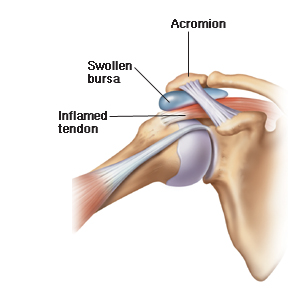The rotator cuff is a group of muscles located in your shoulder that help keep the humerus (upper arm bone) tight within the shoulder socket. The rotator cuff not only provides stability, but also aids in shoulder mobility. The rotator cuff is made up of four muscles each of which move the shoulder in different directions.
| Muscle | Action | Everyday Function |
| Supraspinatus | Abducts the shoulder | Lifts your arm out to the side to get your food from the drive-through |
| Infraspinatus | Externally rotates the shoulder | Helps wash/scratch the top of your back |
| Teres Minor | Externally rotates the shoulder | Aids in brushing your hair |
| Subscapularis | Internally rotates and adducts the shoulder | Helps you put your jacket on or aids in reaching up to grab your seat belt |

